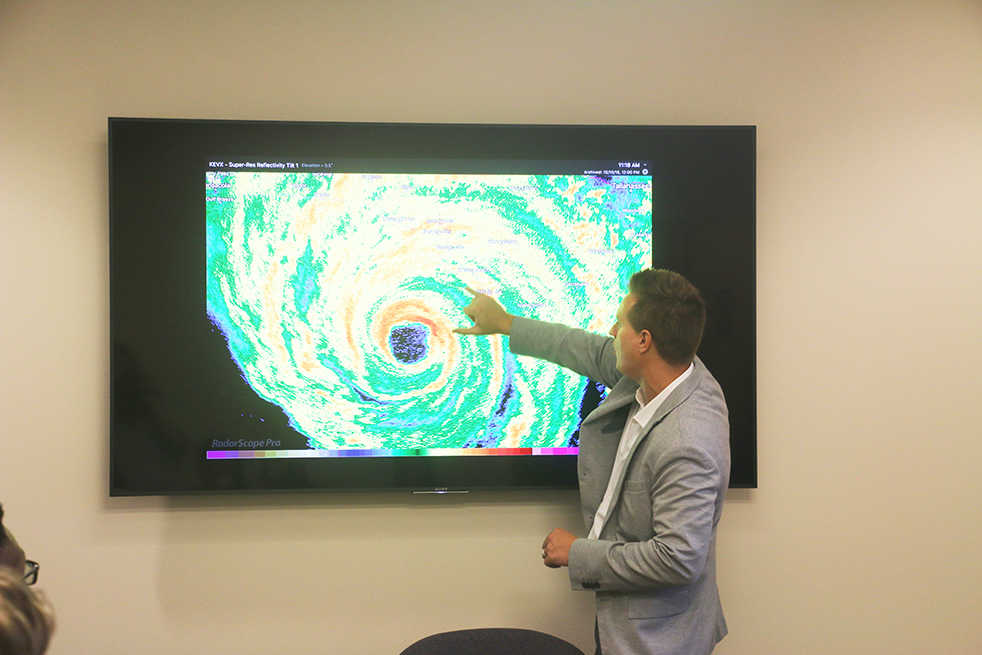Earlier this year, the School of Earth and Atmospheric Science launched the C.L. Chandler Weather Chat Series. It invites students on campus to explore weather events with guest meteorology presenters. Last week the program featured Tech alumnus Brandon Miller, meteorologist and supervising weather producer of CNN International.
Miller expected to discuss what he calls “Atlanta’s Never Ending Summer” but the dramatic events of the weather that unfolded this past week prompted him instead to focus his presentation on Hurricane Michael.
Miller began his presentation with some impressive statistics on Hurricane Michael, revealing the true intensity of the storm. His data collection indicates that this destructive storm was the strongest storm to make landfall in the continental US since 1992 with 155 mph winds. The hurricane also holds the title of the third lowest pressure ever recorded in a US hurricane.
Miller added that the rapid intensification of the hurricane, evidenced by its wind speed intensifying 45 mph in the last 24 hours leading up to landfall, contributed to the storm’s record-breaking storm surge.
Miller explained the increasingly intense hurricane seasons that have recently struck the U.S. in terms of climate change. He noted that climate change is also what has been responsible for Atlanta’s unusually long summer.
Statistics reveal that this very year our last sub-60 degree Farenheit day of spring occurred the earliest it ever has in 149 years, while our first 60 degree Farenheit day of autumn occurred the latest it ever has.
Miller noted that although hurricanes are less indicative of climate change than are the rarities we are experiencing in temperature, hurricanes are what make the stories in the headlines.
“Climate models point to an earlier spring and a later fall. And even though this type of story would not resonate in the media at all — no one is dying because of the temperature,” Miller said, “these statistics on temperature are a sign that really is connected to climate change a lot more than a storm. But a storm is what makes the headline. It is what resonates with people.”
Miller explained how CNN covers stories, as the planning and logistics of storm coverage are extremely challenging. He included behind-the-scenes pictures that reveal the work that must occur in order for the media to cover an event like Hurricane Michael.
“This is what we call the war room, and it really is like a war room,” Miller said, showing a photo of a workroom plastered with maps and post-it notes.
“We have the world’s largest sticky notes: they are the coolest thing and we use them all the time … We put these big maps on the walls because we are trying to position our team in the best places. So they want to know where is the storm, where is it going to be the worst, where is the eye going to hit.”
That is not the end of the hard work of the meteorologist. More responsibilities include ensuring that the team remains safe and that reporters have access to a satellite during the storm. Meteorologists must also keep up with their live blog that features live updates on the storm, as well as coordinate with the news-gathering efforts of CNN. Miller noted that hurricane season is his busiest season, followed by blizzard season.
Miller’s presentation not only provided information on meteorology, but also shared insight into careers related to the topic.
By the end of presentation, listeners grasped how impactful climate change can be and gained appreciation for the sources that provide a platform to share this information. For students interested in meteorology, the Weather Chat Series offers weekly seminars at 11 a.m. every Friday.
